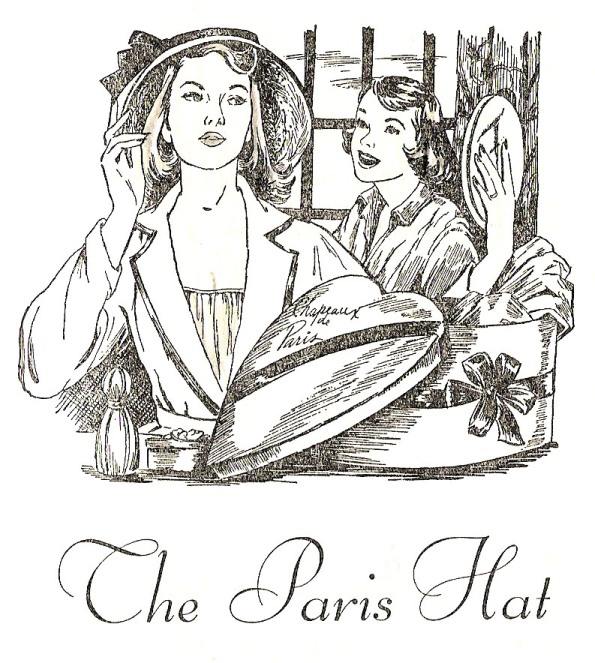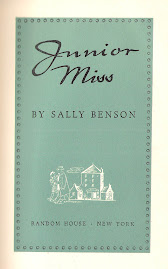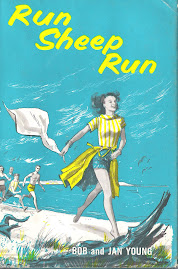 Title: The Long Ride Home
Title: The Long Ride HomeAuthor: James L. Summers
Publisher: Westminster, 1966
Setting: Paso Verde, a small California town
Fun: not being the child of an alcoholic
Quote: "They wanted to help, they'd said, but what kind of help was it that robbed a guy of the last thing he had -- an image of himself as someone able to see the family through any kind of trouble? Help? There wasn't any help. Nothing that anyone could do would change life for Todd Blair."
As one of the few male writers to have a long career in this genre, Summers often specialized in more hard-hitting teen novels. In The Long Ride Home, we are introduced to Todd Blair and his sister Ann, new kids in town, who deliberately make no friends, and who hurry home every afternoon. In case you haven't guessed by the end of the first chapter, their father, Jack, is an alcoholic.
Except for one chapter, which explores Jack's delusional thinking, most of the The Long Ride Home focuses on Todd and Ann. They have sworn a pact to "stick it out": neither will leave home until they graduate from high school. In the meantime they lead lives of isolation, avoiding social occasions or doing anything that will attract attention. Both are full of rage, though they never express it physically. But Ann and Todd are dogged by a couple of nosy overachievers, Gayle Sutton and Bill Caldwell. It turns out that these sparkling, popular kids have - or had -- the same problem once, and they recognize the signs. In one of the more realistic touches of the book, Todd resists their friendship for a long time and when he does go to an Alateen meeting he leaves in frustration. Only at the very end of the book, as Jack enters a state of terminal decline, does Todd turn to Gayle and Bill for help.
The Long Ride Home does have a slight whiff of "after-school special." It explains Alateen, includes the Serenity Prayer, and introduces minor characters who exemplify various types of alcoholics. (All of the alcoholics in the book are parents, not teens.) But there is a solid, realistic core to the book: Todd's controlling attitude and anger, so similar to his father's; the quick mention of a family history of alcoholism; Todd's conflicted interest in Gayle. Full of topical references (New Math, the Vietnam War), the narrative is written in a loose, hip, style:
Ending neither happily nor unhappily, The Long Ride Home is an interesting forerunner of the "problem novels" of the late 60s.
Publisher: Westminster, 1966
Setting: Paso Verde, a small California town
Fun: not being the child of an alcoholic
Quote: "They wanted to help, they'd said, but what kind of help was it that robbed a guy of the last thing he had -- an image of himself as someone able to see the family through any kind of trouble? Help? There wasn't any help. Nothing that anyone could do would change life for Todd Blair."
As one of the few male writers to have a long career in this genre, Summers often specialized in more hard-hitting teen novels. In The Long Ride Home, we are introduced to Todd Blair and his sister Ann, new kids in town, who deliberately make no friends, and who hurry home every afternoon. In case you haven't guessed by the end of the first chapter, their father, Jack, is an alcoholic.
Except for one chapter, which explores Jack's delusional thinking, most of the The Long Ride Home focuses on Todd and Ann. They have sworn a pact to "stick it out": neither will leave home until they graduate from high school. In the meantime they lead lives of isolation, avoiding social occasions or doing anything that will attract attention. Both are full of rage, though they never express it physically. But Ann and Todd are dogged by a couple of nosy overachievers, Gayle Sutton and Bill Caldwell. It turns out that these sparkling, popular kids have - or had -- the same problem once, and they recognize the signs. In one of the more realistic touches of the book, Todd resists their friendship for a long time and when he does go to an Alateen meeting he leaves in frustration. Only at the very end of the book, as Jack enters a state of terminal decline, does Todd turn to Gayle and Bill for help.
The Long Ride Home does have a slight whiff of "after-school special." It explains Alateen, includes the Serenity Prayer, and introduces minor characters who exemplify various types of alcoholics. (All of the alcoholics in the book are parents, not teens.) But there is a solid, realistic core to the book: Todd's controlling attitude and anger, so similar to his father's; the quick mention of a family history of alcoholism; Todd's conflicted interest in Gayle. Full of topical references (New Math, the Vietnam War), the narrative is written in a loose, hip, style:
Gayle Sutton did sparkle, from her shining hair to the winking little pins on her sweater. She had a soft, full mouth and a white perfection in her smile. But what difference did that make? Every high school in the country had them by the dozens. Perfect, absolute, a standard product.
Ending neither happily nor unhappily, The Long Ride Home is an interesting forerunner of the "problem novels" of the late 60s.











No comments:
Post a Comment